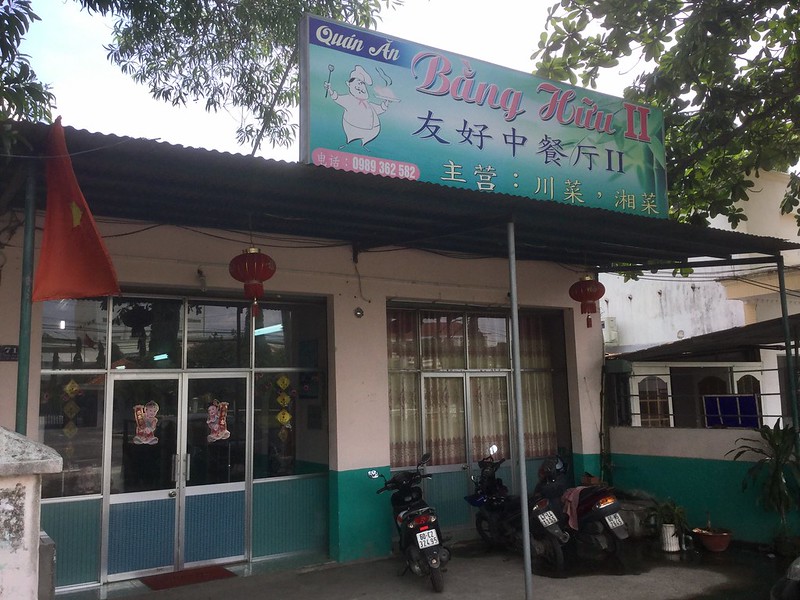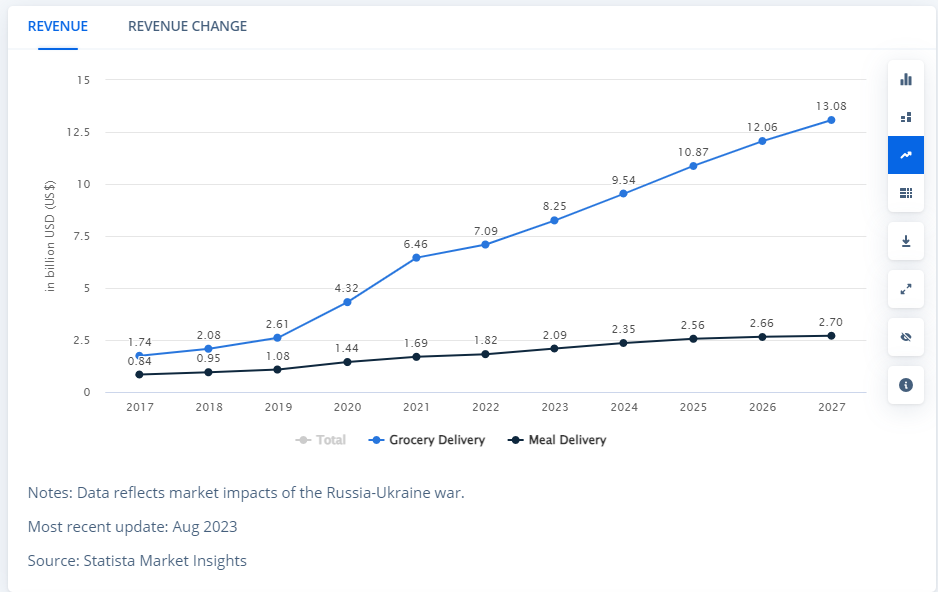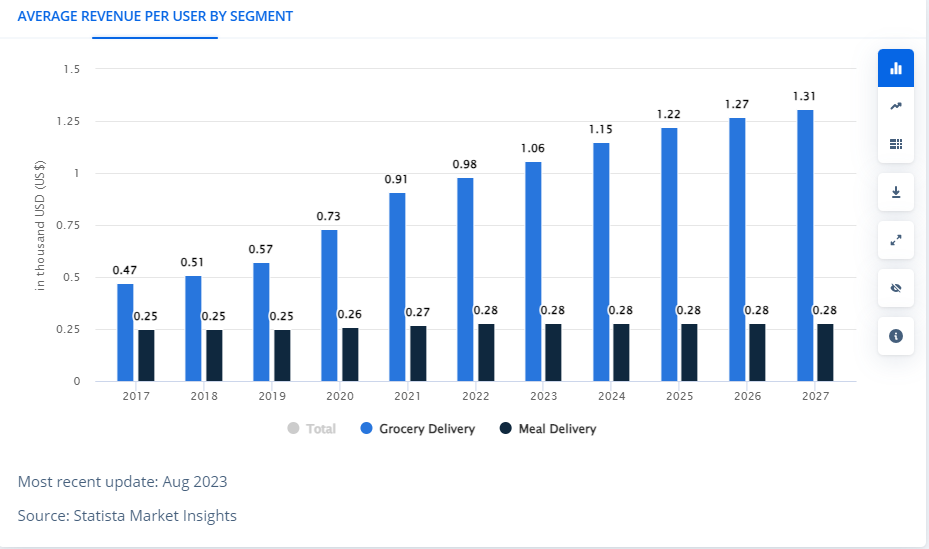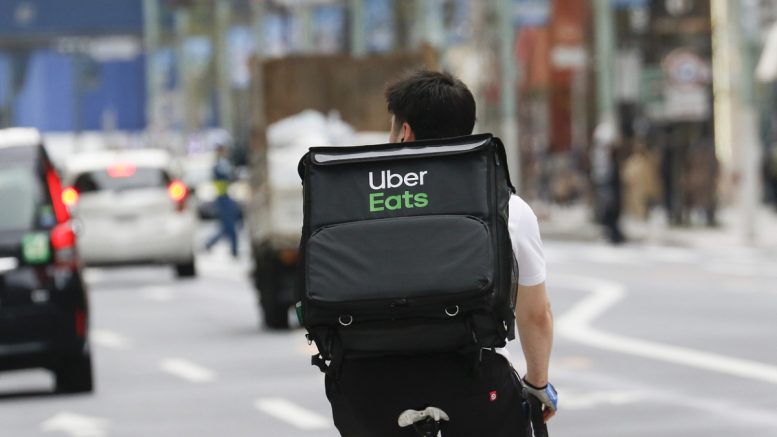
“DoorDash” by focal5 is licensed under CC BY-NC 2.0.
Abstract
Australia’s food delivery industry has undergone a significant transformation in recent years, marked by the emergence of food delivery platforms such as Uber Eats, DoorDash and Deliveroo. These platforms have not only redefined consumer access to food but have also had a significant impact on Australia’s economic landscape and restaurant industry. This paper comprehensively explores these food takeaway platforms’ multifaceted role in reshaping Australia’s economic landscape and catalyzing a culinary revolution in the restaurant industry. The analysis meticulously arranges itself around three pivotal arguments: these platforms actively contribute to economic growth and job creation, they intricately influence the enhancement of consumer accessibility and convenience, and they distinctly pose significant challenges to traditional Australian restaurants, primarily driven by the diversity of fees and commissions they impose. This organizational framework underscores the multifaceted range of benefits they proffer and the extensive array of challenges they can engender.

“Sichuan restaurant in Đồng Nai industrial zone” by Prince Roy is licensed under CC BY 2.0.
Economic Growth and Job Creation: The Impact of Food Delivery Platforms in Australia
To begin with, food delivery platforms, exemplified by Uber Eats, DoorDash, and Deliveroo, have exerted a pronounced influence on the augmentation of economic growth within the Australian context. These platforms have exhibited a discernible propensity to augment the revenue of dining establishments, thereby engendering a favorable impact on the broader economic milieu. Restaurants have extended their market reach through symbiotic partnerships, transcending geographical confines. Consequently, these gastronomic enterprises have noticed a noticeable upsurge in transactional volumes and revenue streams. As corroborated by the Deloitte Access Economics report, the food delivery sector’s estimated contribution to the Australian economy stands demonstrably at a figure exceeding $5 billion in a given fiscal year, thereby underscoring the substantive economic imprint of these platforms. The emergence of food delivery platforms has provided income-generating opportunities for individuals working as drivers and couriers, thus confirming their crucial role in job creation, particularly in the vibrant “working economy” (Australian Institute of Health and Welfare, 2023). Many individuals have gained employment prospects or supplemental income streams by acting as delivery drivers, facilitating the efficient and speedy delivery of food-related orders to customers’ homes. The expansion of this “working economy” has dramatically facilitated the creation of jobs with built-in flexibility to meet the diverse employment needs of the labor force. The proliferation of food delivery platforms, represented by industry leaders such as Uber Eats, DoorDash, and Deliveroo, has contributed to significant growth in the ancillary sector. Marked by the surge in demand for takeaway services, this phenomenon has spawned the rise of industries closely related to food delivery, most notably specialized food packaging and vehicle maintenance. Food needs to remain fresh and unchanged during transportation, so the demand for specialized packaging solutions has increased. At the same time, vehicle maintenance and repair activities have increased due to the growing use of food vehicles (Adeyeye, 2019). As a result, these interrelated ancillary sectors have seen a strong growth trajectory, as evidenced by increased economic activity and job creation, thus demonstrating the far-reaching impact of food distribution platforms on economic vitality.

Enhancing Accessibility, Convenience, and Sustainability: The Influence of Food Delivery Platforms in Australia
Moreover, Uber Eats, DoorDash, and Deliveroo’s food delivery platforms have become integral in enhancing accessibility and convenience for consumers in the Australian dining landscape. This transformation is emblematic of the broader trend within the sharing economy in Australia, where digital platforms have revolutionized how people access services and resources. Much like the sharing economy, these food delivery platforms have redefined access to diverse dining options, transcending geographical boundaries and catering to evolving consumer preferences. Their convenience aligns seamlessly with the on-demand ethos of the sharing economy, where consumers seek instant access to services and goods that enhance their daily lives (Caspersen & Navrud, 2021). The Roy Morgan survey data reflects this shift, indicating the substantial popularity and growth of food delivery apps in Australia, a testament to their alignment with the principles of the sharing economy, which prioritize convenience, accessibility, and flexibility.” Simultaneously, food delivery platforms have redefined diverse dining options for consumers. People can effortlessly enjoy various eclectic restaurant offerings through these platforms, ranging from local to international cuisines. This convenience transcends geographical boundaries, enabling users to explore geographically distant dining options. According to an authoritative survey by Roy Morgan, meal delivery applications enjoy immense popularity in Australia, boasting a vast user base in the millions. This phenomenon aligns seamlessly with the prevailing consumer inclination toward the heightened convenience of accessing an extensive array of dining options with just a few taps. Consequently, food delivery platforms serve as quintessential embodiments of the underlying tenets of the sharing economy within the Australian context. Their impact extends beyond mere convenience and accessibility, encompassing the active generation of economic prospects, the molding of consumer conduct, and initiating discourses about sustainability (ProQuest, 2016). The synergy between these platforms and the sharing economy constitutes a tangible manifestation of the broader societal transition toward digital solutions that meticulously prioritize attributes such as adaptability, convenience, and efficiency across myriad facets of daily existence.

The Costly Dilemma: Food Delivery Platforms and Traditional Australian Restaurants
Furthermore, while food delivery platforms like Uber Eats, DoorDash, and Deliveroo have undoubtedly brought convenience and accessibility to consumers, a critical examination reveals significant drawbacks, particularly regarding their impact on traditional Australian restaurants and their profit margins. These platforms’ imposition of fees and commissions has far-reaching consequences that merit careful consideration. Food delivery platforms’ fees and commissions levied can be exorbitant (Xie, 2022). These platforms typically charge restaurants a percentage fee on each order, often ranging from 20% to 30% or more. This substantial financial burden can be overwhelming for smaller, independently-owned Australian restaurants operating on tight profit margins. The data from various studies in Australia paints a grim picture, with countless restaurants struggling to sustain themselves in the face of these onerous fees. The increasing dominance of food is threatening the sustainability of traditional restaurants in Australia and drink takeaway platforms. Many of these platforms are wealthy and can run aggressive marketing campaigns that overshadow smaller restaurants. This diverts traffic from brick-and-mortar eateries and forces traditional restaurants to spend significant budgets on online marketing, further eroding fragile profit margins. While food delivery platforms have undoubtedly reshaped how Australians eat, their impact on traditional Australian restaurants and profit margins has been highly detrimental. The high fees and commissions these platforms charge have severely impacted smaller restaurants, leading to financial distress and the need to make unfavorable adjustments, such as increasing menu prices. As convenience-seeking consumers increasingly embrace these platforms, the future of Australia’s traditional restaurants is in jeopardy, and the sharing economy threatens the rich culinary heritage and diversity they represent.
Conclusion
In conclusion, this paper provides insight into the multifaceted impact of food and beverage takeaway platforms, particularly UberEats, DoorDash, and Deliveroo, on the Australian economy and food and beverage industry. These platforms have become influential players that have greatly enhanced consumer accessibility and convenience while contributing to economic growth and job creation. Complex data from sources such as the Roy Morgan survey emphasize these platforms’ broad appeal and transformative power. However, it is incumbent upon us to recognize the nuances of this transformative power. While it has empowered consumers and provided livelihoods for working people, it has also created significant challenges for traditional Australian restaurants, with high fees eroding profit margins and forcing them to make adjustments that could jeopardize their long-term viability. As people think about this issue, it is clear that a sensible and balanced approach must be taken. Collaboration between industry stakeholders, including delivery platforms and traditional restaurants, should be fostered to develop fair solutions. The regulatory framework should evolve with the times, and it may be necessary to cap fees or explore alternative fee structures. By taking these steps, Australia can continue to enjoy the advantages offered by food delivery platforms while preserving its precious culinary heritage.
Reference
Adeyeye TE;Yeung EH;McLain AC;Lin S;Lawrence DA;Bell EM; (n.d.). Wheeze and food allergies in children born via cesarean delivery: The Upstate Kids Study. American journal of epidemiology. https://pubmed.ncbi.nlm.nih.gov/30475936/
Caspersen, E., & Navrud, S. (2021). The sharing economy and consumer preferences for environmentally sustainable last mile deliveries. Transportation Research. Part D, Transport and Environment, 95, 102863–. https://doi.org/10.1016/j.trd.2021.102863
OpenAI. (2023, October 2). Uber Eats Australia – Maximum Earnings FREE MASTERCLASS 2023-2024.YouTube. https://www.youtube.com/watch?v=AKD_ABFluWw
ProQuest (Firm) (Ed.). (2016). Sharing Economies. In John, The Age of Sharing (pp. lviii–lxxvii). Polity.
Statista. (2023). [Growth of Online Food Delivery Services in Australia]. Statista. https://www.statista.com/outlook/dmo/online-food-delivery/australia
Xie, E. (2022). Inference in Games Without Equilibrium Restriction: An Application to Restaurant Competition in Opening Hours. Journal of Business & Economic Statistics, 40(4), 1803–1816. https://doi.org/10.1080/07350015.2021.1981914



